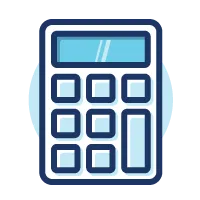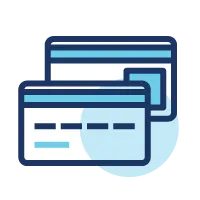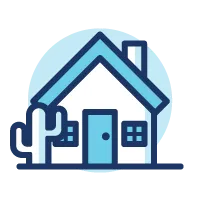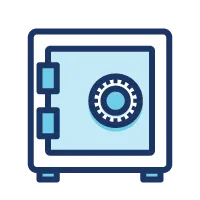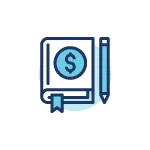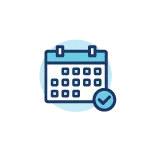Are you curious about how Home Equity Lines of Credit (HELOCs) work? HELOCs are a versatile tool for homeowners to tap into the value of their property. This borrowing option allows you to leverage your home equity while retaining the power to borrow on your terms. Whether you're embarking on home renovations, funding education, or navigating unexpected expenses, understanding HELOCs can empower you to make informed and strategic decisions on your journey toward achieving your financial goals.
What is a Home Equity Line of Credit
A home equity line of credit, or HELOC, is a revolving line of credit that is guaranteed by the equity in your home. The line of credit gives you access to a revolving credit line you can borrow for home improvements, unexpected expenses or to consolidate debt.
The amount you borrow is based on the equity in your home, which is equal to the value of the home minus the amount you owe on your mortgage. If your home is paid off, then the HELOC becomes the first position mortgage on your home.
How Much Can You Borrow with a HELOC?
The amount you borrow is based on the equity in your home, which is equal to the value of the home minus the amount you owe on your mortgage
Typically, most lenders will allow you to borrow between 75% and 90% of the equity you currently have in your home. This amount is based on a few factors, including your credit history, your income, and the lender you 're working with.
For example, let's assume your home appraises for $400,000 and your current mortgage balance is $150,000. Your lender determines you can use 80% of your available equity based on your income, credit history, and other financial factors.
Now simply take 80% of the appraised $400,000 value, which is $320,000, and subtract the current mortgage balance of $150,000 from that amount. This results in a $170,000 line of credit.
| How much can you borrow? | Example data |
|---|---|
| Appraised home value | $400,000 |
| Multiply by 80% | $320,000 |
| Subtract the current mortgage balance | $150,000 |
| Potential line of credit | $170,000 |
The Two Phases of a HELOC: Draw and Repayment Periods
HELOCs are divided into two separate phases: the draw period and the repayment period. The draw period is the amount of time you have to draw funds from your line of credit. This time frame varies from lender to lender, but typically lasts between 5 and 10 years.
The repayment period is when you are required to pay back both the principal and interest to satisfy the balance on the loan. Typically, the repayment period is set by your lender and can last anywhere between 10 and 20 years. During the repayment period, the ability to draw from your line of credit stops and you make fixed payments every month.
For example, a 25-year HELOC may have a draw period of 10 years followed by a repayment period of 15 years.
Payments on a HELOC
During the draw period, the HELOC will have a minimum payment due each month, similar to a credit card minimum payment.
At any time during the draw period, you may pay down the principal or fully pay off the HELOC. Unlike an installment loan, the line of credit can instantly be used again and again after paying down or completely paying off the principal.
During the repayment period, the payments for the HELOC are set up to pay down the entire principal plus interest during a given timeframe. This is similar to an installment loan that has fixed payments each month.
Some lenders will allow the borrower to pay less during the repayment period and then require a larger balloon payment at the end of the loan.
Before closing on your HELOC, make time to understand the repayment terms and ask if the repayment period has a balloon at the end.
How to Get a Home Equity Line of Credit
- Determine the equity in your home
- Prepare your documents
- Apply for the HELOC
Before applying for a HELOC, there are a few things you will want to consider. Make a checklist of the following to-dos to streamline the process and help you save money.
Current Home Value
$400,000
Loan to Value
85%
Maximum Loan Amount
$340,000
Maximum Loan Amount
$340,000
Mortgage Balance
$300
Line of Credit
$160,000
Document Preparation: Applying for a HELOC is very similar to applying for a mortgage. The lender will provide a checklist of documents required. You can get a jumpstart by gathering the following documents ahead of time.
- Proof of Income and Employment: If you are a W-2 employee, you'll need copies of your last two pay statements. It's also a good idea to have the last pay statement from the previous year to show bonus or overtime you collected during that year. If you are self-employed, a freelancer, or independent contractor, you'll need to provide your current profit and loss statements and the previous year's tax returns.
- Assets: Your lender will want to see a list of your assets. Gather the previous 60 days' worth of all bank statements, retirement account statements and other brokerage accounts you may have.
- Debts (Liabilities): Your lender will want to see your current debt payments compared to your income before approving your HELOC application. This is called your debt-to-income ratio.
- Additionally, list out your monthly debt payments such as auto loans, student loans, credit cards and other debt payments you make each month. You will also be asked to provide the most current mortgage statement
Apply for the HELOC: Once you have all your documents gathered, you're ready to apply for a HELOC. Not all banks or credit unions offer the same rates, discounts, or promotions, so it's up to you to shop around for the best deal.You may find a bank or credit union that offers a lower introductory rate; however, it may result in a higher long-term rate.You can apply for a HELOC using a variety of channels. Applications can be made over the phone, in person at a branch location or online.
The Waiting Period
After applying for the HELOC, you can expect a waiting period between 30 and 45 days. This provides time for the loan underwriters to work on your application and time to schedule an appraisal for your home.
Loan Closing
The final step to securing a HELOC is when you sign your paperwork, and your new line of credit becomes available. Once your HELOC is available, you can start writing checks against your line of credit. Some lenders will also provide you with debit cards that are directly attached to your line of credit.
How to Use Your HELOC
Home Improvements
Some use the equity in their home to make home improvements. Not only are the upgrades to your home satisfying your wants, but the upgrades may also add value to your home. When you go to sell your home, the added value could offset the cost of the HELOC during the home improvement period.
Emergency Fund
A home equity line of credit is a great tool to use as an emergency fund. Many consumers open a HELOC and use it for emergencies. Remember, there is no monthly cost or interest when the balance on your HELOC is zero.
To Pay Off High-Interest Debt
Many people use HELOCs to help them pay down high-interest debt like credit cards. While this can be an effective use of your HELOC, you need to be aware of the risks. By swapping your credit card debt to a HELOC, you’re taking unsecured debt and converting it to debt that’s borrowed against your home.
Before you make the decision to use a HELOC to pay off higher interest debt, identify why you landed with excessive credit card debt. Make sure this process doesn’t repeat itself when you move the debt from credit cards into your HELOC.
College Expenses
Often, parents choose to use a HELOC to pay for college expenses. If you have enough equity in your home, a HELOC may offer you a better interest rate versus private student loans. Also, with a HELOC, you only have to withdraw and pay back the amount you need. For example, if you need $20,000 for college, then you 'll pay that amount back versus a lump sum payment using a student loan.
Down Payment on a Second Home
Maybe you 're looking to purchase a rental property or a second vacation home. Saving the 20% down payment may take longer than you 'd like, so an alternative is to utilize the equity in your home for the down payment right now.
When a HELOC May Not Be a Good Idea
You Don't Need to Borrow That Much Money
When you open a HELOC, there will be fees on the front end to complete the application. These fees may not be worth it if you 're only applying for a small line of credit. In this situation, a higher interest rate credit card may be a better alternative if you plan on borrowing a smaller amount of money.
To Pay for a Vacation
Remember, a HELOC is backed by the equity in your home. That means if you get behind on your payments, it could jeopardize your home. By using your HELOC for a vacation, you 're taking a bigger than necessary risk for an optional expense.
You're Moving Soon
If you know you're moving soon, a HELOC may not be the best idea. After you sell your home, you will need to If you know you 're moving soon, a HELOC may not be the best idea. After you sell your home, you will need to pay off the balance of the HELOC. This closes out the HELOC early, which may immediately result in an early cancellation fee to the lender.
Unstable Income
If you have unstable income or anticipate your income decreasing, it may be wise to push pause on applying for a HELOC. Let 's assume your income fluctuates and you can no longer make the minimum monthly payments. When you stop making the minimum monthly payments on your HELOC, the home you live in is in potential jeopardy.
Frequently Asked Questions About HELOCs
Will a HELOC affect my Credit Score?
Yes, a HELOC can have both a positive and negative impact on your credit score. Whenever you apply for new credit, you will incur a hard inquiry, which initially lowers your credit score. However, the HELOC will decrease your credit utilization, diversify the type of debt, and show payment history with on-time payments. These three things alone can drastically improve your credit score.
Is a fixed Home Equity Loan better than a HELOC?
A home equity loan is a lump sum fixed-rate loan with fixed payments over a predetermined term. A home equity loan is great when you need a specific amount of money upfront and you 're able to make fixed principal and interest payments each month.
If you 're looking for a line of credit that you can draw on at any time, then a HELOC is a better alternative to a home equity loan.
Key Takeaways
- A HELOC is a revolving credit line secured by your home's equity, offering versatile funding options for expenses like home improvements, debt consolidation, emergencies, and education.
- HELOCs are split into draw and repayment phases, with flexibility to draw funds during the draw period and fixed payments during the repayment period.
- It's crucial to have a well-defined plan in place before applying for a HELOC.
- While HELOCs offer advantages, they're not suitable for everyone. Ensure you understand terms, fees, and repayment conditions before committing to a HELOC, and consider alternative options if necessary.
A home equity line of credit is a great way to utilize the equity in your home. For some, it 's trading a high interest rate for a lower interest rate. Others may use it as an emergency fund, and some will increase the value of their home through home improvements.
However, if you decide to use your home equity line of credit, the most important step is to have a plan for your HELOC before you apply.
Chris “Peach” Petrie is the founder of Money Peach. Money Peach partnered with OneAZ to provide free financial education to members across the state. To learn more about OneAZ’s partnership with Money Peach, click here.
APR = Annual Percentage Rate

